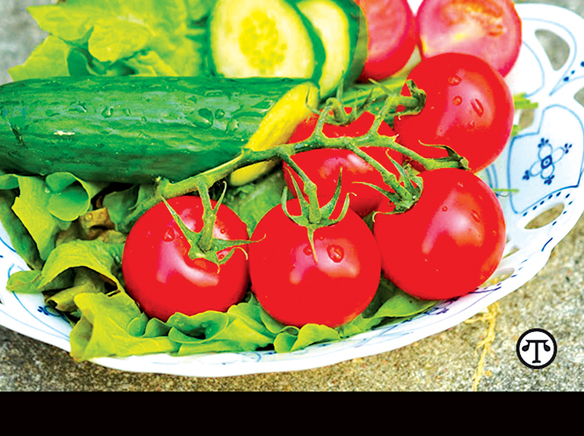
(NAPS)—Although seven out of 10 deaths in the United States are linked to such chronic diseases as heart disease, cancer, obesity, tobacco use and related conditions, the choices you make at the grocery store and while dining out can help keep you out of such statistics.
How To Eat Healthier
(NAPS)—Although seven out of 10 deaths in the United States are linked to such chronic diseases as heart disease, cancer, obesity, tobacco use and related conditions, the choices you make at the grocery store and while dining out can help keep you out of such statistics.
How To Eat Healthier
“So often, people tell us that they are too busy and it’s easy to grab what’s available,” said Elaine Auld, chief executive officer of the Society for Public Health Education (SOPHE). Her advice: “Keep healthy choices on hand when things get busy.”
Here are a few more of Auld’s suggestions that may help:
•If you must eat on the run, Auld suggests powering up your breakfast with instant oatmeal with low-fat milk for extra calcium, and skipping the fast-food drive-through.
•You have to plan and stock healthy options, she adds. Keep on hand low-fat yogurt, cheese and milk in your refrigerator and healthy options for snacking, including fruits and vegetables. Bananas, carrots, cereals and peanuts can make tasty, nutritious and inexpensive snacks.
•You can also save both money and calories by packing a healthy lunch at home and bringing it with you to work or school.
•When you do dine out, consider ordering a small plate or children’s menu item. Alternatively, you can split an entrée with a friend or bring home half of your meal.
•If you order pizza, cut calories by getting a thin crust. Top pizza with tomatoes, peppers, mushrooms, zucchini, spinach, broccoli or other vegetables.
•Limit servings of meats, fish and poultry to five ounces, or eat low-cost alternatives such as beans.
These small changes can add up to big rewards. You can save money, improve your health and lower your risk of chronic disease.
What Communities Do To Promote Healthy Eating
Just as people need to plan healthy nutrition into their daily routines, so do communities. SOPHE is part of a national program to prevent chronic diseases like diabetes and heart disease, through funding from the Centers for Disease Control and Prevention.
It works alongside four national organizations to support a network of communities around the country. Partners include the American Heart Association, the American Planning Association, the Directors of Health Promotion and Education, and the National WIC Association.
Some Examples
On Virginia’s Eastern Shore, a region where obesity affects over 70 percent of people, project organizers are working with area restaurants to add healthy choices to menus. Ads for the project invite diners to “taste the good life” and highlight restaurants offering healthy menu items.
Lack of access can make it difficult for people to purchase nutritious food and beverages. Project partners in southern Chester County, Pa., worked with area YMCAs to create a vending policy that increases healthy offerings. Revamped vending machines provide YMCA visitors and employees with nutritious and delicious options.
In New Mexico, Five Sandoval Indian Pueblos, a tribal organization, is working with an organic food nonprofit agency to get flat-rate boxes of fresh produce. The boxes are sold in convenience stores and distributed. With the nearest grocery store nearly an hour away, these fresh produce boxes make it easier for families to get healthier food to eat, without making a long drive.
In Bensenville, Ill., the B-Well Bensenville coalition is helping consumers keep their weight in check by promoting physical activity. When adopted, a “Complete Streets” policy will give residents more options to walk or bike to school or work safely.
“Everyone is involved in this and has a stake in it,” said Victoria Benham with B-Well Bensenville. She added that the coalition is planning a walkathon to a park, which lets members of the community see it’s completely doable to walk to the park.
It’s about empowering people and communities, say organizers. “We want to help communities, families and individuals overcome the barriers to good health,” explained Auld. “It’s about making healthy living easier where people live, learn, work and play.”
Learn More
For further facts about the national project to prevent chronic disease, visit www.Partnering4Health.org.




















